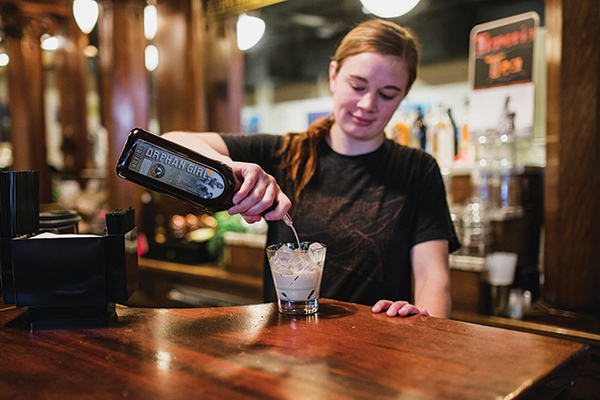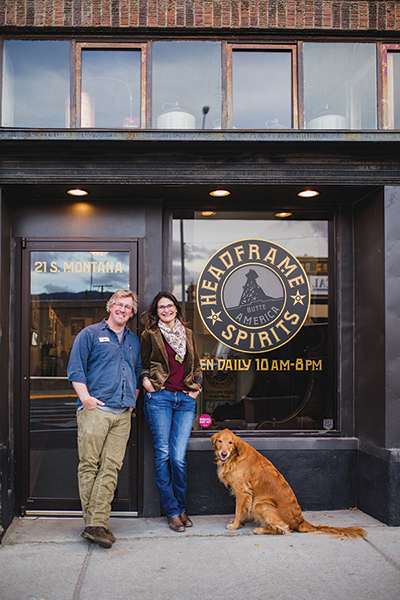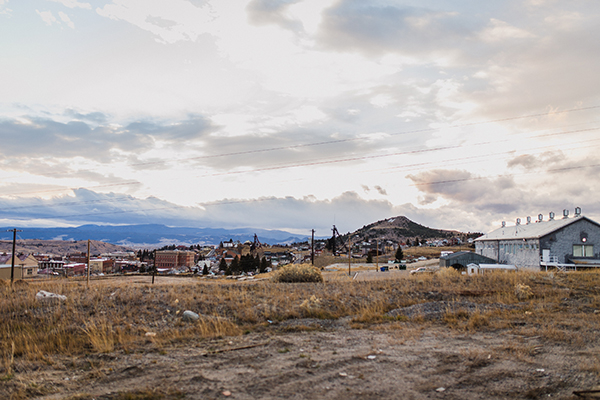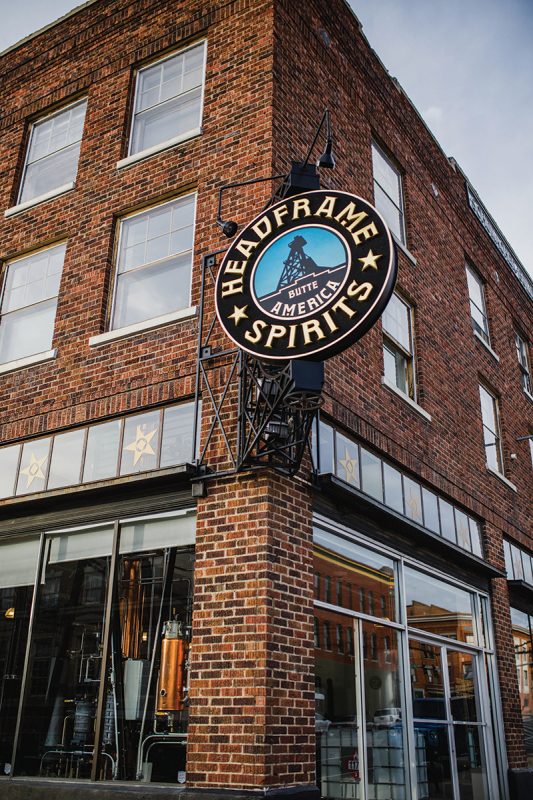Prepare to Get Schooled
Written by Heather Bode • Photography by Jen DeLong
A guy walks into a bar the Tasting Room. A bartender extols the virtues of the day’s special ending with, “It tastes like strawberry cheesecake!” The man wrinkles his nose replying, “Listen, I’m in town for a visit, and when I’m here, I have to have a Dirty Girl.”

Not in the mood for hard liquor? Try a Dirty Girl: Orphan Girl bourbon cream liqueur and root beer served over ice.
This may not be a gut-busting joke, but it is a testament to the fierce loyalty customers have for Headframe Spirits products: Neversweat Whiskey, Anselmo Gin, High Ore Vodka, Destroying Angel Whiskey, and the best-selling Orphan Girl Bourbon Cream Liqueur. Founded in 2010 by John and Courtney McKee, this top-notch liquor flows from their microdistillery in downtown Butte. With the microdistillery industry booming right now, you might think Headframe Spirits is just another “flash in the pan.” It’s not. Here’s why: they have the education to back their business and product. That’s what’s taking them to new heights-figuratively and literally.
HISTORY

The McKees-often shadowed by Wylie-are into learning: “We know we don’t know everything, so we ask all the time, which makes a comfortable framework to ask questions and not look like idiots while we’re doing it!” says John McKee.
John McKee says, “I grew up playing in the shadow of the Anselmo. This was after the mines had shut down but before Superfund had happened. So all the mine yards were open. My dad was a professor at Tech and all behind Tech was open mine shafts. You could play in them all day long.”
Years later, John, along with some co-workers, invented a way to distill biodiesel. He spent his time in the Midwest (“because that’s where all the grease is”) building refineries and equipment capable of distilling 110 million gallons annually. Then the recession hit. “No one had 52 million dollars to build refineries. So we went to our own corners of the world…and I went home,” says John.
Courtney already knew the next step: John would keep distilling. It wouldn’t be biodiesel, but it sure would produce valuable products. The company name, Headframe, came about because, as John says, “We knew what it wasn’t going to be: McKee Distilling or McKee anything. It’s not about us. Ever.”
Courtney adds, “We were at Chico and John says, ‘You know, instead of calling it Headframe Distilling, we should call it Headframe Spirits.’ And it took a fraction of a second to see ‘spirits’ both in the context of booze and history and ghosts and story. I think I smacked John and said, ‘Then we could name everything we make after the mines in Butte!’” John laughs, “Then we ate a flaming orange.”
John went about gathering distillery equipment and was smacked again. This time, with a problem: Continuous flow distillation equipment was not available in the scale he needed. He was told, “Nobody does that. It’s always been done this way.” But John had the knowledge to prove the industry wrong. He built his own still, now affectionately called Frankenstill, and opened Headframe Spirits to the world. Butte’s ready for the attention.
“Part of what we’re doing with Headframe is getting Butte excited and inspired by the present. Butte focuses it’s identity and pride on things that don’t exist anymore. I’m not ok with that. When you think your best is behind you- you stop trying. You’ve set up a context that doesn’t give you anywhere to go. Our context is, ‘There’s great things happening in Butte,’” says Courtney.
Paying homage to Butte’s history is a big part of what they do. Not because they want to live in the past, but as Courtney says, “to erase the period at the end of a story and add a comma.” Butte’s story has its comma in Headframe Spirits.
PHILANTHROPY
“Butte has a very charitable culture to it. That comes from the past when families were losing their dads and uncles in the mines. There was no other income source and so there was this constant need. This was what you did,” says John. Today, Butte incorporates this mining-era spirit of giving and continues to extend it to citizens in need.
Headframe Spirits embodies this same fundamental. At the writing of this article, they were at $185,000.30 “We track that metric and talk about it every Tuesday at our team meeting. That number represents dollars only. Not bottles. Not expertise or volunteer hours. The money is given to organizations, festivals, events, and nonprofits that share our vision and values,” says Courtney.
BUSINESS/ECONOMICS

“Adaptive re-use” is what the McKees have in mind for the Kelley Mine area-location of Phase 3. The hoist house is on the right. This is also where Headframe manufactures microdistillery stills. It takes three people 2 months of metalcraft to complete each still.
With the success of their own distillery (Phase 1), John and Courtney looked for ways to help another community: their fellow distillers. Manufacturing continuous flow distillation equipment for microdistilleries fulfills that objective. The manufacturing arm (Phase 2) is up and running…which leads to Phase 3.
Phase 3 began with a recent move to a larger manufacturing facility at the Kelley Mine head frames. “We want to green up the space, take the hoist house and turn it into a distillery. The front third of it will be a restaurant,” says Courtney. Where miners once gathered to be lowered into the earth, she says, “We want to make it a gathering place again. It’s ridiculously ambitious. But big things don’t happen if nobody says, ‘You know what’d be cool?’”
You know what else will be cool? When they achieve their goal of becoming the largest distillery west of the Mississippi, because eventually, “We can sell it back to the people that’ve made it real,” says John. That’s right: their ultimate goal is to sell the company to the employees.
Headframe Spirits is educating all of us in the art of handcrafted hooch. Start taking notes, Montana, because as their newly minted team uniforms proclaim, “It’s a Big Damn Deal!”




